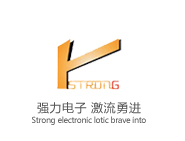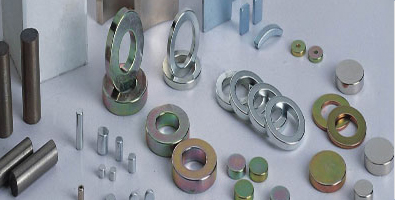-
NEWS
- Nanometer magnetic material attracting investmentPublished??2012??03??21??
NASA Glen research center will be the most advanced electrical engineering design technology and complex computer automatic analysis technology, developed the most advanced power systems, applied to space and ground equipment. Glen Center for the study of motivation and on-board propulsion technology division is the study of the dynamical system of leaders. In space exploration, the division developed for the international space station, the Harbert space telescope and earth orbit satellite to provide power to the technology. On the ground of applications, the Division advanced aerospace power concept into commercial application of energy, to develop solar energy and nuclear power, battery and fuel cell energy, communications and telecommunications satellite, refrigerator, hybrid electric vehicles, as well as the heating and air conditioning system. Whether the new space propulsion system, or as a land power system provides dynamic, Glen research center in power generation technology can offer NASA completes its task required power.
In 1999, is located in the state of Connecticut Farmington Inframat company received the Glen Center for the study of financial and technical support, signed the small business innovation research program ( SBIR ) a first stage and a second stage production contract, frequency, soft magnetic, ceramic nano composite material, improved NASA electronic power equipment, magnetic properties. According to Inframat, if these nano composite material can be easily developed, they will have better performance than the traditional ferrite, comprising simultaneously with high permeability, high resistivity and low magnetic loss ( in electronic devices, ferrite is composed of ferrite compound and one or several metal oxide magnetic material, has high permeability and resistivity. ) In the past half a century, the traditional ferrite is used for high frequency devices only magnetic material, and the material in the condition of high frequency, its performance relative to some of the weak. And, as everyone knows, ferrite in low temperature exposure of Yu Qiang demagnetizing field, quality variation.
Inframat began to study using wet chemical synthesis preparation method in multiple frequencies using nano composite materials technology, to develop a can be applied to NASA power management and distribution, as well as in the application of commercial technology. Although in the NASA SBIR during the plan, the technology had not been able to get final results, however, Inframat can make full use of the experience learned from technical and financial support, to further solve some technological problems, create a licensed commercial application technology. The electronic system is multifunctional, miniaturization trend of development, but also the development of faster than ever before, lower cost, but its development has many limitations, such as conventional semiconductor chip in the inductive components may be electronic component miniaturization main obstacle, this is due to the traditional miniature magnetic materials only at very low frequency under normal the use of. The limitations of traditional magnet in high frequency ( above 1MHz ) device applications become very important, because the traditional magnets or magnetic permeability of the quality factor with the increase of frequency and reduce, thereby increasing its decline index.
In order to overcome these limitations, to promote material preparation, cost, weight, performance and reliability improvement of high frequency electronic devices and sensors, to achieve the required level, Inframat company established a branch, known as the embedded magnets company ( Embedded Nanomagnet-ics, Inc. ). The new company will be Inframat company innovation nanometer composite material to promote commercial areas, the trademark for the " M-power". According to In-framat," M-power" trademark on behalf of embedded nanometer magnet products one of the key advantages: power transmission can be similarly sized conventional magnetic induction value, and high efficiency10 times.
The "M-power" nano composite material design and production, Inframat and embedded magnets have a proprietary technology, nanometer magnetic particles can be made very dense magnetic clusters or film. For example, when used as a nanometer magnetic group forming, this material can obtain embedded power circuit board applications and high inductance ( in this application using thin film technology, able to obtain high inductance). In this case, nano magnetic clusters can simply adopt the silk screen printed circuit board. On the other hand, when made into a magnetic thin film, this material can be used in semiconductor wafer to obtain high induction coefficient, and not on the circuit board applications.
Tests show," M-power" magnetic material can be in very low core loss ( this loss is the result of nuclear magnetization and the magnetic flux obstruction caused by ) and excellent electrical properties under high magnetic permeability, even before reaching Giga Hertz frequency range can also use normal (1000MHz = 1GHz ). Inframat company thinks, this material has more advanced than the traditional ferrite soft magnetic properties, the magnetic nanometer composite soft magnetic performance and electrical performance parameters to combine, in a broad range of applications more convenient.
Can be used" M-power" magnetic materials equipment: power converter, antenna, broadband filters, sensors, digital packaging converters, RF switch, microwave and millimeter wave circulator, muffler, hybrid integrated circuit, and semiconductor chip. These magnetic materials equipment application covering business areas include: telecommunications, computer, consumer electronics, automotive, aerospace, defense, power generation, as well as industrial operations.
Embedded nanometer magnet technology is initially directed electronics, telecommunications and the national market development, because it has attracted the attention of market leader in the field. One of the Tagent companies, on the" M-power" material integrated into a small, low cost wireless radio frequency identification system technology, completion of the automatic electronic label reading and item tracking.
-
ZheJiang DongYang Strong Electron Co., Ltd. All rights reserved ??ICP??11024802??
-
Technical Support???????????

